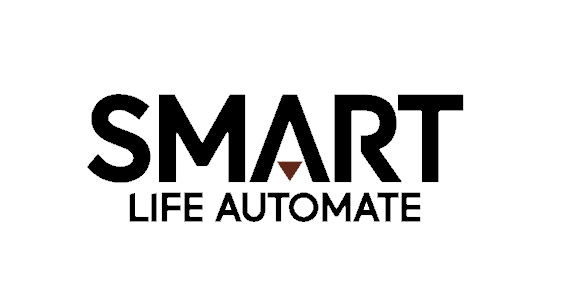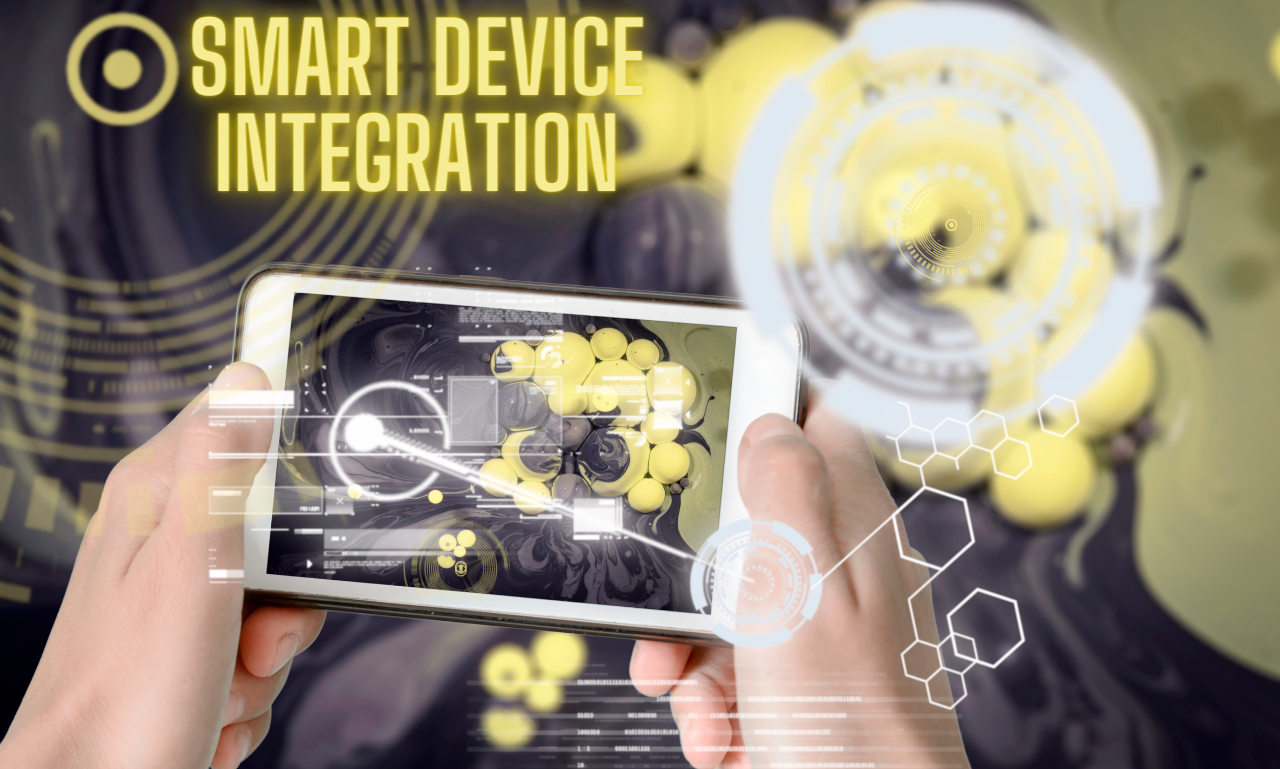Smart Device Integration
In the era of technological development smart device integration emerges as a pivotal concept revolutionizing the manner we engage with our surroundings. From controlling domestic appliances to tracking health the mixing of clever gadgets has grown to be a cornerstone of cutting-edge dwellings. Lets delve into the intricacies of this phenomenon and discover its various aspects.
Exploring the Landscape: Types of Smart Devices
Smart gadgets embody a big selection of devices designed to streamline numerous components of our lives. These include clever thermostats, lighting systems, safety cameras, voice assistants, wearable fitness trackers and more. Each device brings precise functionalities catering to one-of-a-kind desires and preferences.

Harnessing the Benefits: Advantages of Smart Device Integration
The integration of clever devices offers a plethora of advantages ranging from greater comfort to improved performance. By connecting disparate gadgets into a unified environment customers can seamlessly manipulate and automate their surroundings. This results in optimized power usage accelerated productivity and heightened consolation degrees in the domestic environment.
Navigating Challenges: Considerations for Seamless Integration
Despite its numerous blessings smart device integration provides certain challenges and concerns. Compatibility problems, information safety issues and complexity in setup and configuration are some common hurdles that customers may additionally stumble upon. Addressing these demanding situations calls for careful plans, thorough research and adherence to exceptional practices in device selection and implementation.

Driving Forces: Key Technologies Shaping Integration
Several key technologies power the evolution of smart device integration. Internet of Things (IoT) connectivity, artificial intelligence (AI) and device learning algorithms play pivotal roles in allowing seamless communication and interoperability among devices. Additionally improvements in wi-fi conversation protocols and cloud computing in addition facilitate integration and statistics alternate.
Choosing the Right Path: DIY vs. Professional Installation
When embarking on the adventure of smart device integration, individuals are faced with the selection of DIY (Do It Yourself) and expert setup. While DIY solutions offer flexibility and value savings, expert installation guarantees expertise, reliability and comprehensive aid for the duration of the integration system. Deciding the most appropriate technique depends on factors including technical talent, complexity of the setup and favored degree of customization.
Centralized Control: Smart Home Hubs and Controllers
Smart domestic hubs and controllers serve as important command centers, orchestrating the functionalities of interconnected devices. These devices permit customers to control a couple of smart devices through a single interface, simplifying operation and improving consumer enjoyment. Whether through committed hubs or cellphone apps centralized manipulation fosters seamless integration and easy management of clever home ecosystems.

Prioritizing Security and Privacy
As smart devices end up more pervasive, ensuring security and privacy is paramount. Vulnerabilities in linked devices can probably divulge touchy records and compromise person protection. Implementing strong safety features, consisting of encryption protocols, normal firmware updates and network segmentation, is critical to safeguard against cyber threats and protect user privacy.
Exploring Integration Use Cases
The integration of smart devices extends past mere convenience, encompassing various use instances across numerous domain names:
Energy Efficiency: Smart thermostats and energy management structures optimize heating, cooling, and lighting, resulting in decreased electricity intake and lower software payments.
Home Automation: Automated workouts and schedules streamline ordinary duties, from controlling home equipment to managing domestic protection.
Health Monitoring: Wearable devices and health trackers offer real-time insights into physical activity, sleep styles, and ordinary well being, empowering users to make knowledgeable lifestyle choices.
Entertainment: Smart amusement structures supply immersive audiovisual reviews, with features such as voice management and personalized recommendations enhancing consumer engagement.
Anticipating the Future: Trends and Innovations
The landscape of smart device integration continues to evolve rapidly, driven by ongoing technological advancements and changing consumer preferences. Emerging trends include the proliferation of voice-activated interfaces, integration with augmented reality (AR) and virtual reality (VR) technologies, and the rise of edge computing for faster data processing and decision-making. Furthermore, innovations in sustainability, such as energy harvesting and eco-friendly materials, are reshaping the paradigm of smart living.

| Aspect | Description |
|---|---|
| Types of Smart Devices | Encompass a wide range of gadgets such as smart thermostats, lighting systems, security cameras, wearable fitness trackers, etc. |
| Advantages | Enhanced convenience, improved efficiency, optimized energy usage, increased productivity and heightened comfort levels. |
| Challenges | Compatibility issues, data security concerns, and complexity in setup and configuration. |
| Key Technologies | IoT connectivity, artificial intelligence (AI), machine learning algorithms, wireless communication protocols and cloud computing. |
| DIY vs. Professional Installation | DIY offers flexibility and cost savings, while professional installation ensures expertise, reliability, and support. |
| Centralized Control | Smart home hubs and controllers serve as central command centers, enabling management of multiple devices through a single interface. |
| Security and Privacy | Implementing robust security measures, encryption protocols, regular firmware updates, and network segmentation. |
| Integration Use Cases | Energy efficiency, home automation, health monitoring, entertainment, etc. |
| Trends and Innovations | Proliferation of voice-activated interfaces, integration with AR/VR technologies, rise of edge computing, sustainability innovations. |
In Conclusion
Smart Device Integration represents a paradigm shift in how we interact with generation, providing unprecedented ranges of comfort, efficiency, and customization. By harnessing the energy of interconnected gadgets and embracing rising technology, people can create smarter, more intuitive living areas that adapt to their desires and preferences. As we navigate this transformative adventure, its critical to remain vigilant approximately protection, prioritize privacy, and live abreast of evolving developments to fully understand the capability of clever living.
FAQs
What is smart device integration?
Smart device integration refers back to the seamless connection and interaction among smart gadgets and different systems, networks, or offerings. These gadgets, including smartphones, watches and clever vehicles, can communicate with each other, adapt to their environment, and perform duties autonomously.
For instance in automobiles Smart device integration permits capabilities like remote unlocking, emergency help and facts exchange, enhancing protection and convenience. Overall, Smart device integration transforms how we engage with our era making our lives extra green and interconnected.
How can smart devices be interconnected with other technologies or systems?
Smart device integration refers back to the seamless connection and interaction between clever devices and different systems, networks, or services. These gadgets, along with smartphones, watches, and smart automobiles, can speak with every different, adapt to their surroundings, and perform tasks autonomously.
For instance in automobiles, Smart device integration allows functions like remote unlocking, emergency help, and information exchange, enhancing protection and convenience. Overall smart device integration transforms how we interact with the era, making our lives extra efficient and interconnected.
What does IoT device integration entail?
IoT integration refers to the process of seamlessly connecting IoT gadgets and systems to work harmoniously, sharing information and insights. The intention is to obtain interoperability and decorate the overall capability and performance of these interconnected gadgets. In sensible phrases it method of making independently designed packages, statistics, and various IoT additives (which include gadgets, statistics, structures and applications) work properly together inside the context of enforcing cease-to-stop IoT enterprise answers.
Whether its defining use cases launching proof-of-concept tasks or deploying limited IoT solutions, integration performs a crucial position in understanding the overall potential of the Internet of Things. By bridging the gap between physical gadgets and the virtual international of the internet, IoT integration permits seamless verbal exchange and collaboration across numerous technologies and structures.

